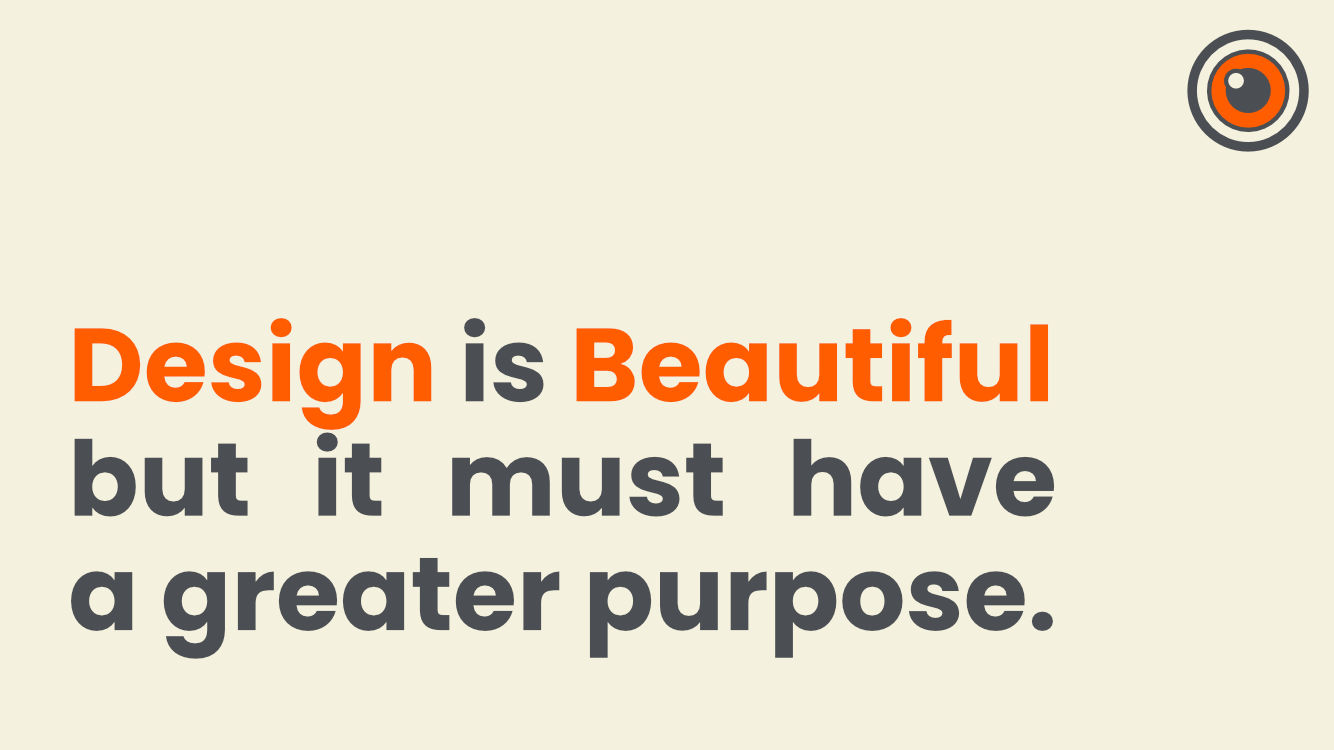
Design Is Beautiful — But It Must Have a Greater Purpose
This is one for us designers - A Reminder
In today’s digital-first world, design surrounds us—sleek apps, bold campaigns, refined packaging, captivating websites. The aesthetic bar has never been higher. But amidst the gloss and gradients, a simple truth often gets lost:
Pretty and Beautiful is easy. Purpose takes intention.
Design isn’t just how something looks—it’s how it works, what it communicates, and who it serves. It’s strategy made visible. And without purpose, even the most beautiful design is nothing more than decoration. What Is Purpose-Driven Design?
Purpose-driven design begins with intention and ends with impact. It’s about aligning creativity with clarity, aesthetics with empathy, and beauty with function.
At its core, it asks:
• Who is this for?
• What problem does it solve?
• How does it serve the user, the brand, or the world?
1. Empathy Over Ego Design is not self-expression—it’s user-expression. To design with purpose means stepping outside of your own preferences and into the shoes of the people you’re designing for. What do they need? What frustrates them? What inspires them? When we build from empathy, we create experiences that resonate, not just impress.
Good design says “look at me.”
Great design says “I see you.”
2. Form Follows Function Yes, visuals matter. Typography, color theory, composition—they all influence how we perceive and interact with design. But they should never come at the cost of usability or clarity. Purpose-driven design embraces minimalism not because it’s trendy, but because it helps users focus. It uses beauty strategically, not superficially. As Steve Jobs once said, “Design is not just what it looks like and feels like. Design is how it works.”
3. Intent Leads to Impact The most powerful designs don’t just look good—they achieve something:
• A landing page that converts because it guides users intuitively.
• A logo that tells a brand story in a single glance.
• An app interface that reduces friction and boosts accessibility.
Pretty design may catch attention, but purposeful design holds it—and earns trust in the process.
4. Purpose Is Measurable Here’s the kicker: Purpose-driven design drives results. It's not only a creative philosophy—it’s a business strategy. When design decisions are made with clear goals in mind (increase signups, reduce drop-off, clarify brand messaging), they lead to measurable outcomes.
Design becomes a tool, not a garnish.
In Conclusion
Aesthetics will always have a place in design—but they should be in service of something greater. Because when beauty and purpose align, design becomes transformational.
So the next time you're staring at a blank canvas or revisiting an old layout, ask yourself:
What’s the purpose here?
If you can answer that clearly, the beauty will follow—and it will matter.